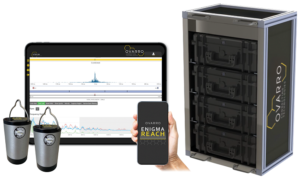Hydraulic Institute Members Assess Pumping Systems with Newly Developed Tool from Department of Energy
PARSIPPANY, NJ, August 16, 2000 - As part of the Hydraulic Institute's (HI) Allied Partner Agreement with the Department of Energy (DOE), a newly developed Pumping System Assessment Tool (PSAT) has been designed and introduced to HI members. The PSAT, a collaborative effort by Oak Ridge National Laboratory and the DOE's Motor Challenge Program, will assist engineers and facility operators in preliminary assessments of how efficiently pumping systems are operating. The PSAT is also well suited for performing plant energy surveys by consultants or plant engineers, and like other valuable energy saving resources, can be downloaded from the HI web site at www.pumps.org.
"For many industrial facilities, the energy consumed in pumping fluids comprises a large fraction of their total energy consumption, and operators are often unaware of how effectively energy is being consumed in their pumping systems," explained Robert Asdal, executive director of HI. "The PSAT provides a relatively simple indication of effectiveness by estimating the work done by the pumping system and compares that to the estimated energy input into the system."
Easy-to-Use
Requiring only minimal operating data to perform its analysis, the software reports potential energy and cost savings that could be achieved if an optimized pump motor combination was applied. The tool uses generic typical performance characteristics of pumps and motors based on performance characteristics obtained from the Motor Challenge's MotorMaster database and on achievable pump efficiencies from Hydraulic Institute standard ANSI/HI 1.3/Centrifugal Pump Design and Application. Users can provide information such as nameplate data (e.g. motor size and rated speed), motor current or power, and measured/required flow rate and head. Potential savings are estimated in terms of energy and dollars. Although PSAT does not tell how to improve systems, it does prioritize attractive opportunities and allows the user to broaden or narrow the search for improving efficiency.
Technical Requirements
The system requirements for operating PSAT include Microsoft Windows NT or Windows 95/98, at least 10 megabytes of available space, and a recommended 32 megabytes of RAM. The software includes a built-in tutorial and PowerPoint presentation that provide additional information on factors affecting the various components and overall pumping system effectiveness. "For a variety of reasons, many companies do not invest in energy efficiency programs. Our primary goal of working with HI is to raise the awareness of how new technology and best management practices can increase energy efficiency and productivity without sacrificing higher profits and market share. The PSAT is a key element in a larger plan to make energy efficiency within the pumping industry an operating norm," noted Aimee McKane, Program Manager for the DOE's National Laboratory.
The PSAT was initially presented to HI members at the Institute's most recent annual meeting in January, with a more formal training session on the subject held in May. There are future plans for HI and the DOE to collaborate on summary reports and case studies that showcase application of energy efficiency and life cycle costing concepts. Other collaborative projects include a video-based education program on Energy Reduction in Pumps & Pumping Systems, co-authorship of trade journal articles on energy efficient pumping systems, and the offering of training workshops to the municipal water and wastewater industry among others.
The 83-year old Hydraulic Institute, the largest association of pump producers in North America, serves member companies and pump users by providing product standards and forums for the exchange of industry information. For more information on the PSAT, visit the new energy section of the HI web site at www.pumps.org, or call (973) 267-7772 in the U.S. or (888) 786-7744 toll-free. Requests may also be faxed to (973) 267-9055 or mailed to Hydraulic Institute, 9 Sylvan Way, NJ 07054-3802.
Source: Hydraulic Institute Inc.







